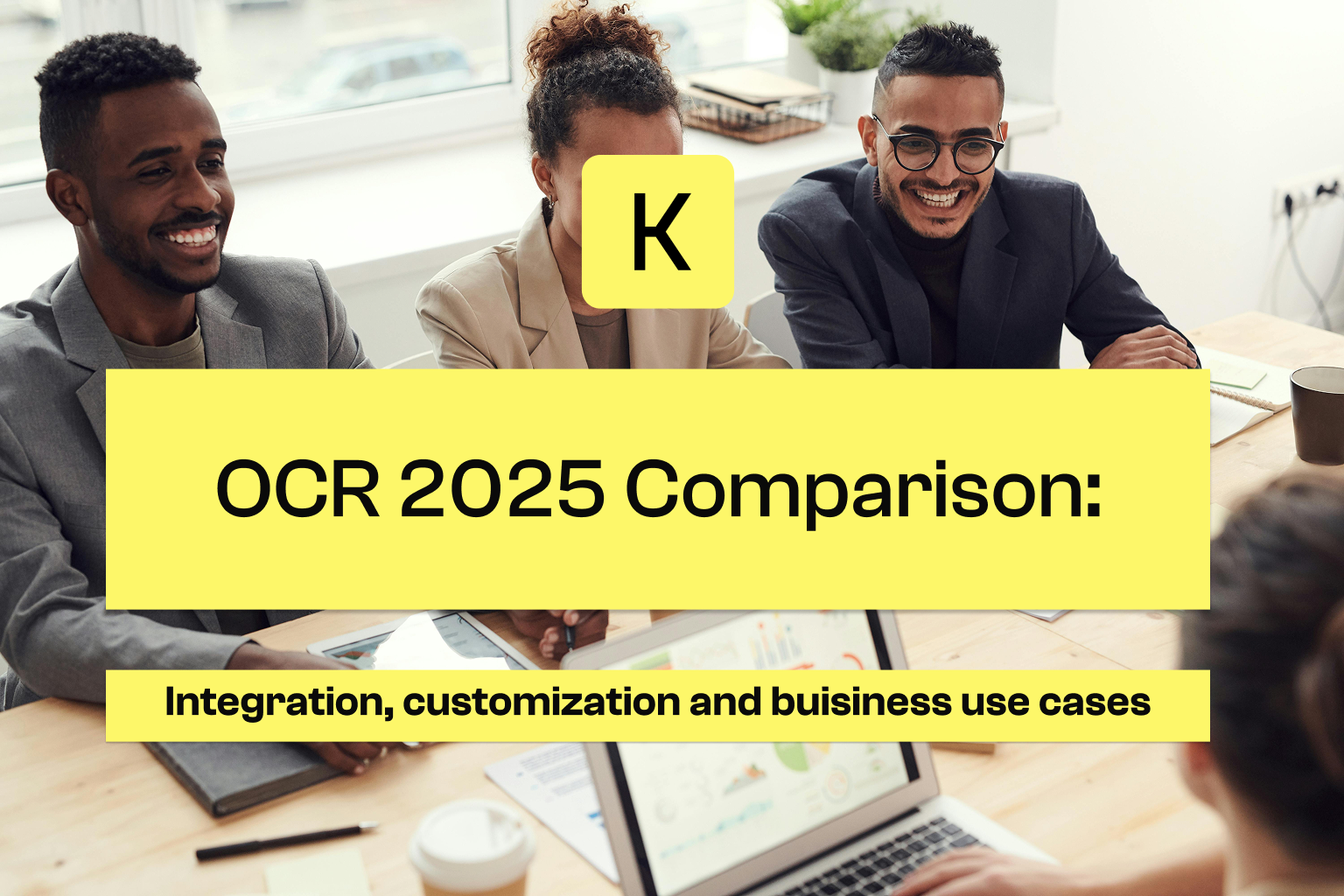.png)
How to Accurately Classify Documents with Intelligent OCR? A Concrete Use Case on ID Documents
Case study
Last update:
April 22, 2025
5 minutes
Découvrez comment l’Intelligent Document Processing (IDP) révolutionne la gestion documentaire en combinant OCR avancé, IA et machine learning. Ce guide complet explore son fonctionnement, ses avantages, ses cas d’usage et ses différences avec l’OCR traditionnel, pour aider votre entreprise à automatiser et optimiser ses processus documentaires.
Learn how IDP transforms document management with OCR, AI, and ML—benefits, use cases, and differences from traditional OCR.
Companies are faced with an overwhelming volume of documents, such as invoices, contracts, forms, and emails, that require quick and accurate processing, which has become a major challenge.
This is where Intelligent Document Processing (IDP) comes in.
IDP is a technology that automates the extraction, classification, and analysis of data from documents by combining advanced OCR, artificial intelligence, and machine learning.
With Intelligent Document Processing, businesses can reduce errors, speed up their workflows, and improve operational efficiency.
In this guide, we will explore IDP in depth: how it works, its benefits, use cases, and how it differs from traditional solutions like OCR. Whether your company is looking to optimize its document processes or adopt an intelligent automation solution, this guide will provide all the insights you need to understand and harness the potential of IDP.
.png)
IDP (Intelligent Document Processing) doesn't just extract text; it also interprets its meaning. Whether it's managing invoices, legal documents, financial records, or organizing medical files, this technology identifies key information and adapts to the specific needs of each document.
It can handle all types of data from various documents (structured, semi-structured, or unstructured), adapting to almost any process and a wide range of formats, regardless of the industry.
By using artificial intelligence (AI) and machine learning (ML), IDP extracts, organizes, and processes the information in your documents fully autonomously.
Furthermore, IDP solutions easily integrate with business systems such as CRM, ERP, EHR, and many others, optimizing the management and utilization of data.
One of the main advantages of Intelligent Document Processing (IDP) is its ability to minimize manual work, allowing employees to focus on higher-value tasks. By automating document-related processes, IDP not only boosts productivity but also reduces human errors and enhances operational efficiency.
With numerous IDP (Intelligent Document Processing) solutions available on the market, choosing the one that best fits your needs can be a real challenge.
Here are some key recommendations to help you make the right decision:
1. Identify Your Business Needs and Objectives
To choose an IDP solution, it's essential to understand your specific needs and goals. Determine the types of documents to be processed (invoices, contracts, etc.), their volume, and their format (digital or paper).
Specific requirements: Assess the volume of documents to process and define the expected outcomes, such as automating data extraction or improving accuracy.
Multilingual support and integration: If you work with multilingual documents, choose a solution capable of handling them. Also check that it can easily integrate with your existing systems (ERP, CRM).
Specialized solutions: Depending on your industry, a domain-specific or highly customizable IDP solution (legal, financial, etc.) may offer features tailored to your needs.
2. Compare different IDP providers
To make the best choice, it’s important to conduct thorough research and compare the various IDP solutions available on the market. Take the time to explore the options offered by different providers by evaluating their features, functionalities, and performance.
It may be helpful to test trial versions or demos to check the user-friendliness of the tool and assess its effectiveness in real-world scenarios. This will give you a better understanding of how each solution meets your specific needs and allow you to make an informed decision.
3. Consider cost and ROI
When choosing an IDP solution, it’s essential to take into account the implementation cost and the return on investment (ROI) to ensure it aligns with your budget and business objectives.
Evaluate potential savings, such as the reduction of labor costs linked to manual document processing, as well as long-term benefits like improved operational efficiency and reduced human error.
4. Evaluate the features and capabilities of the IDP
It is crucial to examine its features and technical capabilities. Several elements should be considered:
Scalability: Make sure the solution can easily scale as the volume of documents increases. A good IDP solution should be able to adapt to your company’s growth without compromising performance.
Integration: Ensure that the solution integrates easily with your existing systems (CRM, ERP, etc.), to guarantee smooth management of extracted data without requiring complex changes to your infrastructure.
Customization: The solution should offer customization options to adapt to the specifics of your business processes and workflows. A flexible solution will allow optimized data extraction according to your particular needs.
.png)
In the field of intelligent automation, some terms can be difficult to distinguish. Two acronyms that often come up are OCR and IDP.
Unlike traditional Optical Character Recognition (OCR) systems, which simply convert printed text into digital format, Intelligent Document Processing (IDP) goes a step further: it understands both the content and the context of documents, enabling accurate processing of unstructured data.
While OCR is effective for straightforward tasks like text digitization, IDP is designed to handle complex documents and workflows that require validation or decision-making. IDP not only captures raw data, but also interprets its meaning and adapts to specific business needs through technologies like AI and machine learning.
In short, while OCR excels at text conversion, IDP is a more suitable choice for businesses with complex requirements, aiming to fully leverage the potential of advanced automation technologies.
Resources
.png)
How to Accurately Classify Documents with Intelligent OCR? A Concrete Use Case on ID Documents
Case study

Compare 4 OCRs according to your business uses, types of documents, API integration, customization and business logic.
Blog

Complete comparison of the best OCR solutions: Performances, use cases, prices.
Blog